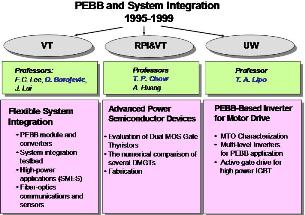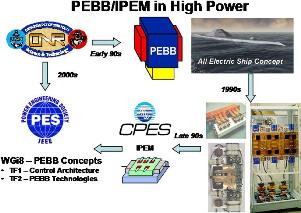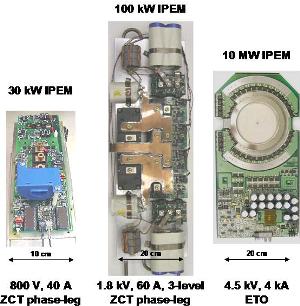RESEARCH
Standard-Cell, Open-Architecture Power Conversion Systems

The foundational ideas of this engineering vision came from the Power Electronics Building Block (PEBB), seeking to expand the usage of this concept while exploiting the numerous advantages offered by it, namely modularity, scalability, reconfiguration, and reduced design cycles.
Numerous PEBB-based power electronics conversion systems were developed to explore alternative PEBB topologies, soft and hard commutation techniques, control architectures, choice of semiconductor and passive devices, and most importantly the functional and temporal partitioning of PEBB modules.
The means to the end chosen was the embracement of the hierarchical nature of PEBB-based converters by applying it to the modeling approach, control software, and energy processing characterization of power electronics systems. The resultant two-dimensional hierarchical reference model pursued the complete analysis and design of power electronics systems, covering not only the electromagnetic, thermal, and mechanical interactions from semiconductors up to complete power systems, but also their associated controls, modeling, and communications at every hierarchy level. The results obtained in this project successfully verified the capabilities and great flexibility of the proposed power electronics standard-cell reference model developed for the analysis of PEBB-based systems.
Going forward, CPES is currently performing a study on the development of 1 MA switch, in what could become the first one million amp PEBB using SiC semiconductor devices. For this CPES is employing its own-developed embedded packaging technology, advancing the process into a fully three-dimensional approach to achieve the voltage and current ratings required. Regarding other applications, it is also expected that PEBB modules will become increasingly predominant as a technology for the development of future more-electric aircraft, where CPES has also actively participated in the development of high reliability three-phase PEBBs.
























































































